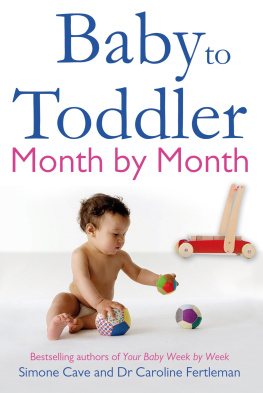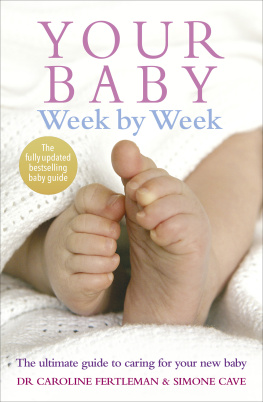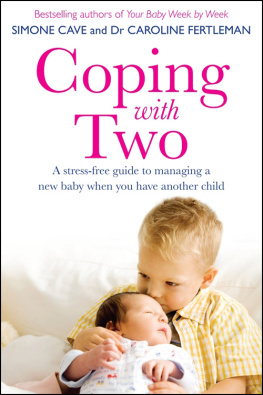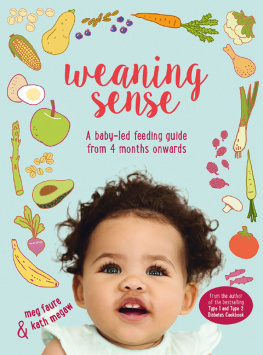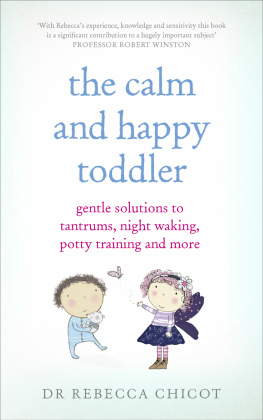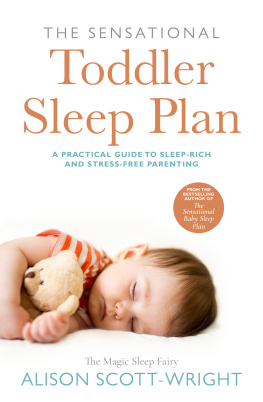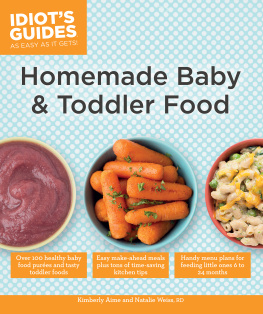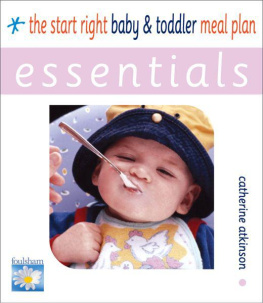

Simone Cave and Caroline Fertleman, 2011
The moral rights of the authors have been asserted.
All rights reserved. No part of this book may be reproduced by any mechanical, photographic or electronic process, or in the form of a phonographic recording; nor may it be stored in a retrieval system, transmitted or otherwise be copied for public or private use, other than for fair use as brief quotations embodied in articles and reviews, without prior written permission of the publisher.
The information given in this book should not be treated as a substitute for qualified medical advice; always consult a medical practitioner. Any use of the information in this book is at the readers discretion and risk. Neither the authors nor the publisher can be held responsible for any loss, claim or damage arising out of the use, or misuse, or the suggestions made or the failure to take medical advice.
A catalogue record for this book is available from the British Library.
ISBN 978-1-84850-209-3 in print
ISBN 978-1-84850-530-8 in epub format
ISBN 978-1-84850-529-2 in Mobipocket format
To Lewis, Douglas, Natalie, Harry, Tobias and Betsy
CONTENTS
We would like to thank Paul Johnson, Judy Cave and Barbara Levy. And also numerous healthcare professionals at The Whittington Hospital and elsewhere for their invaluable input. Those we would particularly like to thank are Sam Behjati, Mike Cave, Sheila Doherty, Adam Fox, Linda Greenwall, Deborah Hodes, Kate Hodge and Susan Leigh.
And finally, wed like to thank the following babies and toddlers who, unknowingly, have been a huge help with our observational research: Natalie, Martha, Gabby, Maisy, Lena, Marie Josephine, Sebastian, David, Eva, Ethan, Esme and Charlie.
The early years of parenthood are a magical time, and you will already have watched your tiny newborn grow into a big chuckling baby who flirts with the world. Well, the show doesnt stop here and some would say the fun is really about to begin. You have front-row seats to one of the most entertaining and often hilarious stages of childhood when your baby grows into a toddler.
Over the next 18 months you will witness your 6-month-old baby transform into a running, talkative toddler with attitude.
Following the success of our first book, Your Baby Week by Week, which takes you from birth to 6 months, we have been inundated with requests for a follow-up book. And now its here Baby to Toddler Month by Month follows the journey from month 6 to month 23 just at the point when your baby is about to turn 2.
Youve no doubt become highly competent at looking after your baby over the last 6 months, but now you will need a whole new set of skills as you help your little one with her first mouthfuls of solid food, her first steps and her first words. Youll also need a few tricks up your sleeve to cope when your toddler throws her lunch across the kitchen or flatly refuses to go in her buggy. She will quite literally throw her toys out of her pram.
We havent given you magic answers in this book because, despite having had six toddlers between us, we simply havent found any. Of course weve shared our favourite tips and tricks, which we know work. But more important than giving you solutions, we have focused on giving perspective and understanding. You cant change the nature of toddlers and thank goodness. But if you understand a little of whats going on in their minds, it can give you a window into their world and a degree of patience with whatever theyre getting up to.
For example, when your 15-month-old suddenly starts making a big fuss at bedtime and hates you leaving the room, it is most likely because separation anxiety peaks at this age and she is genuinely anxious. With this in mind, we suggest a way of resolving the problem. And when your 22-month-old toddler shrieks, mine and refuses to share a toy kettle with another child, its comforting to know that this is a normal developmental stage that happens once your child is able to see herself as a separate and independent person.
Having this month-by-month insight into your childs developmental changes will make her behaviour seem fascinating rather than alarming and overwhelming.
Weve referred to your child as she in this book, simply because in our last book we opted for he, and it seems only fair. And because theres no clearly defined moment when a baby turns into a toddler, we use the term baby from months 6 to 12, after which we use both baby and toddler. Then as we approach month 23 we gradually reduce the number of references to baby and increase the use of toddler until were using toddler exclusively. This seems to match how parents refer to their own children at these ages.
Throughout the book we have tried to avoid giving strict instructions on how to bring up your child, because this is a very individual thing and, anyway, children dont conform to textbooks. As with our last book we have adopted a gentler, more advisory approach, giving you information and, hopefully, an understanding of the changes your child is going through so that you can make informed decisions and feel confident that you are doing the best you can for your child.
WEANING
This is a huge subject and something that parents often worry about. Theres more confusion than ever at the moment because UK Government guidelines have changed, and also its become fashionable to follow baby-led weaning.
We have given you the very latest information (at the time of going to print) and enough background facts on the various weaning methods so that you can make your own informed decision on how to wean your baby.
We also have an entire chapter on planning meals for your baby, which covers finger foods, purees and how to include your baby in family meals from day one.
And of course we cover healthy diet as well as how to deal with the various challenges you may face over the coming months, such as fussy eating or refusing to eat at all.
Theres so much pressure on parents to feed their toddlers healthily that this can be a very stressful time. But with our month-by-month guidance you will hopefully avoid many of the thorny issues altogether. Its quite common, for example, for babies to refuse to eat lumpy food. But if you know this in advance and also know what to do, you can avoid it ever becoming a problem.
GETTING THE MOST FROM BABY TO TODDLER
Having a child aged between 6 and 24 months will mean that you are very busy, so we have made it easy for you to find what you are looking for. Read the month that is appropriate to your babys age beginning at 6 months. Then follow each month after that until your childs second birthday.
You dont have to read the entire chapter simply pick out the headings that are relevant to you for example Sleep, or perhaps Feeding. And if you cant find what you are looking for, then you can skip ahead a month or two. Your baby will never be an exact match to the book because all babies are different and develop at different rates. You can also, of course, use the books Index to help find answers to specific questions.
Milestones
Every month we have included a Milestones section where we have listed various developmental goals that your baby may reach though please dont worry if she doesnt reach them all bang on schedule! All babies are different, so each parent will tick off different milestones. The idea isnt to get as many ticks as possible its not a competition. You probably wouldnt notice half of these milestones if you werent looking out for them. The aim of this section is really just to have a bit of fun and to engage more with your baby. You may go back and tick off some of the milestones a month or so later, and some you may never tick at all.
Next page
